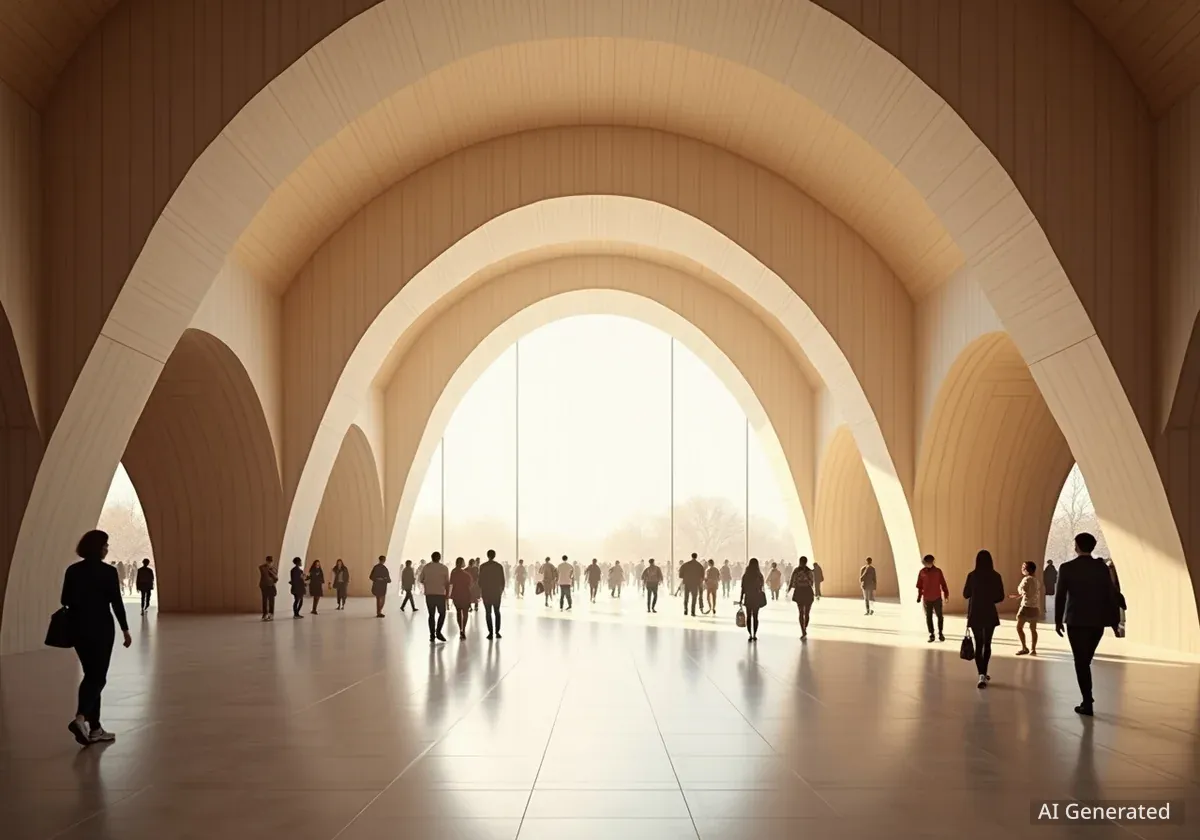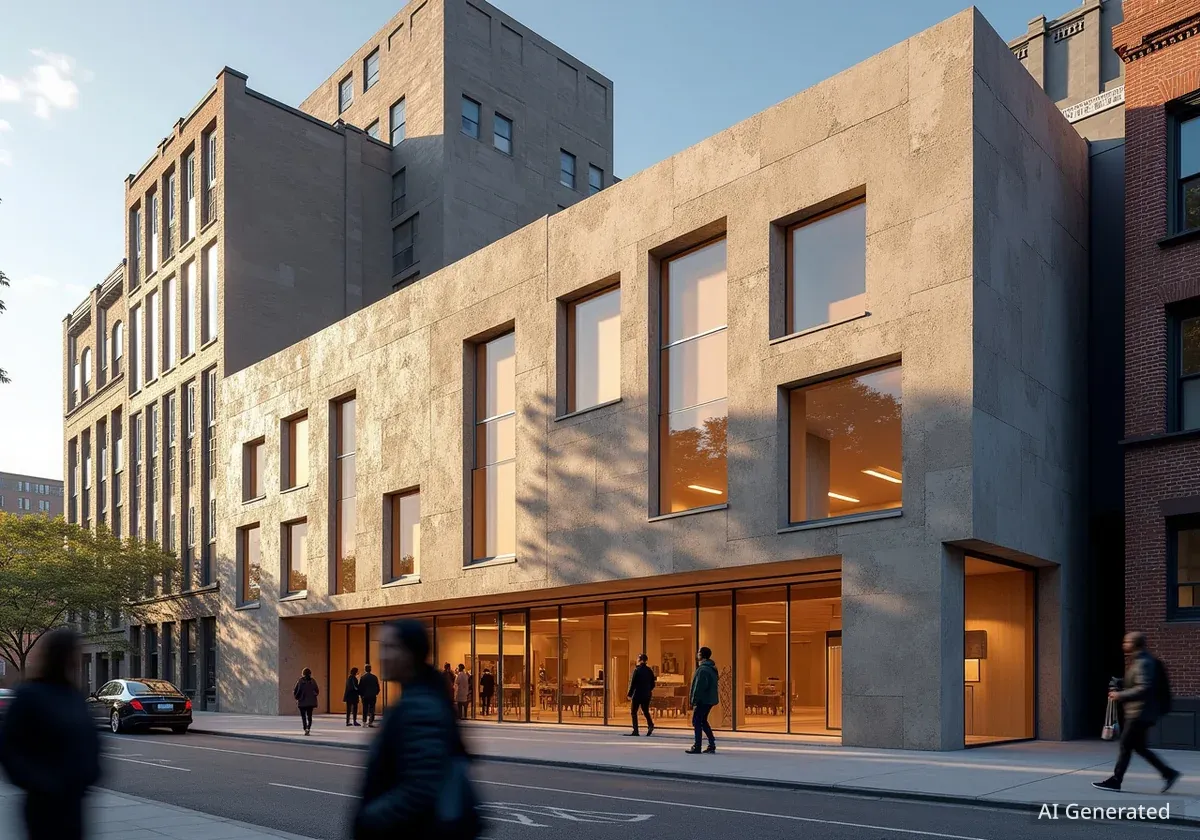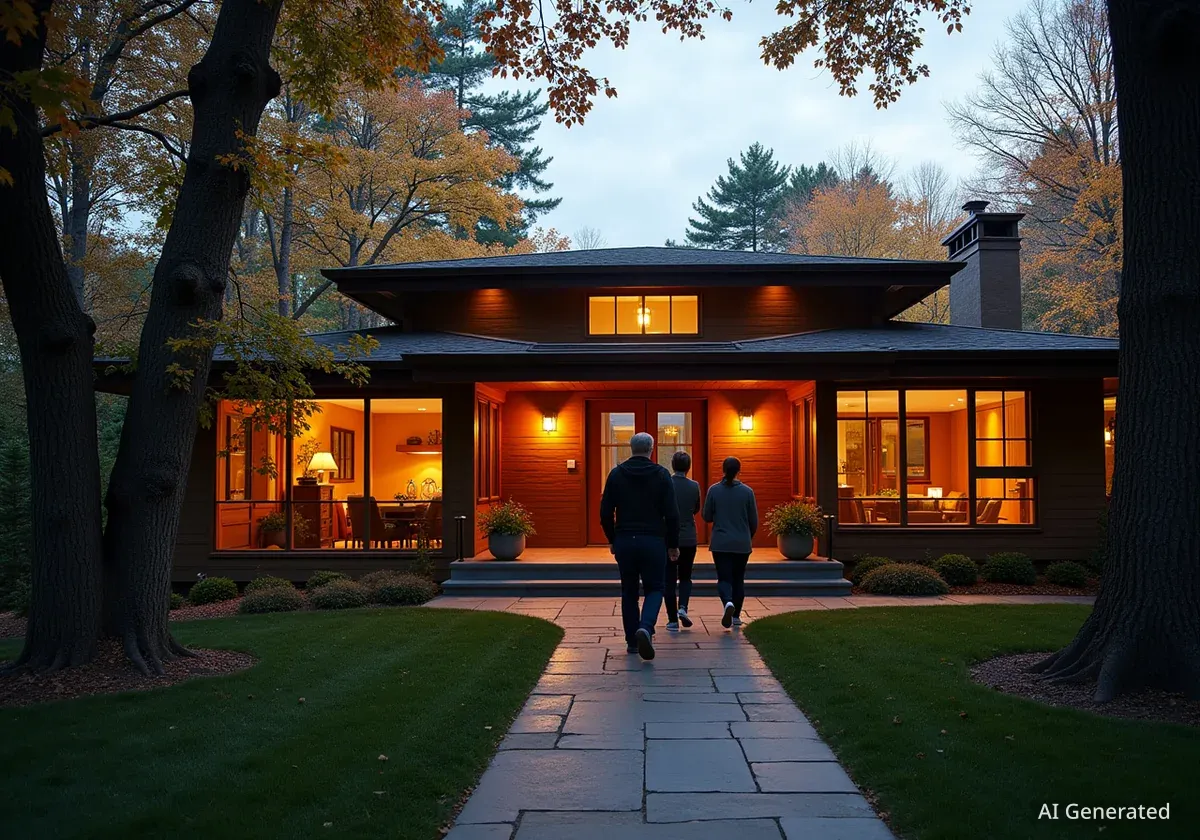The St. Louis Symphony Orchestra's home, Powell Hall, has undergone a significant transformation with the completion of an arched extension by the architecture studio Snøhetta. This project not only adds new public and functional spaces but also revitalizes historical interiors and introduces a public plaza, aiming to better integrate the cultural institution with its urban environment.
The expansion, officially finished in September 2025, represents a blend of historical preservation and modern architectural design. It seeks to enhance the visitor experience and provide improved facilities for the orchestra, reflecting a long-term vision for the landmark building.
Key Takeaways
- Snøhetta completed an arched extension and renovation of St. Louis' Powell Hall.
- The project includes new lobby, educational spaces, and a public plaza.
- The design complements the original 20th-century building by Rapp & Rapp.
- Sustainability was a key focus, including adaptive reuse and energy efficiency.
- The expansion aims to make the hall more accessible and public-facing.
A Harmonious Blend of Old and New Architecture
Snøhetta's design for the Powell Hall extension introduces a series of arched forms that gently curve alongside the existing structure. This approach was intentional, aiming to create a dialogue between the historic Beaux-Arts building and the contemporary addition. The original hall, designed by Rapp & Rapp in the early 20th century, first served as a movie palace before becoming the permanent home of the St. Louis Symphony Orchestra (SLSO) in the 1960s.
The new section expands the building towards the street, creating a more inviting presence. It houses crucial elements such as an expanded lobby, new circulation paths, dedicated educational areas, and essential back-of-house facilities. The architects ensured the addition's scale remained respectful, preserving the original building's distinct profile.
"The new expansion was conceived not as an add-on, but as a complementary 'dance partner' to Powell Hall – gently leaning against it and smaller in scale, to preserve the original building’s iconic silhouette," said Takeshi Tornier, a director at Snøhetta.
Powell Hall's History
Opened in 1925 as the St. Louis Theatre, a grand movie palace, the building became home to the St. Louis Symphony Orchestra in 1968. It is known for its ornate Beaux-Arts style and excellent acoustics, making it a cherished cultural landmark in the city.
Designing for Public Engagement and Inspiration
A significant part of the project involved creating a new public plaza. This outdoor space is designed for public programming and improved carpool access. It guides visitors towards the new arched structure, characterized by large glass panes framed within a canted shell. This shell culminates in distinct points at its apex, adding to the sculptural quality of the facade.
Craig Dykers, a founding partner at Snøhetta, explained that the design drew inspiration directly from musical instruments. The distinctive arcing windows, for example, were informed by the elegant curve of a violin's waist. These forms also aim to mimic the fluid motion of a conductor's baton as they lead an orchestra, creating a subtle visual connection to the building's purpose.
The facade incorporates corbeled masonry, a design choice Dykers specifically mentioned for its aesthetic appeal during winter months, particularly when layered with snow. The deliberate slope of the facade directs the eye upwards, countering what Dykers described as the "alienating" effect of the original building's vertical massing.
"We aimed to break with the existing building's vertical massing. This verticality has been perceived as somewhat alienating over the years, particularly along the facades of Grand and Delmar Boulevards," Dykers stated. "Leaning the facades toward the sky provides a softer visual language, especially in connection with the scalloped forms in plan."
Musical Inspiration in Design
- Window Curves: Modeled after the waist of a violin.
- Facade Motion: Reflects the path of a conductor's baton.
- Winter Beauty: Corbeled masonry designed to look appealing with snow.
Interior Spaces and Material Contrast
Inside the new addition, a grand staircase serves as a central circulation element, connecting the atrium seamlessly with the historical structure. From below, its twisting form creates an oculus, drawing the eye towards the ceiling. According to Takeshi Tornier, this staircase acts as a visual beacon from outside and guides visitors through a deliberate procession to the various terraces within the atrium.
The interior palette of the new wing is intentionally minimal, offering a clear contrast to the ornate style of the original hall. White walls dominate, complemented by wooden battens used for specific details, such as the soffit above the ticket counter. This design choice highlights the distinction between the historical and contemporary elements.
Dykers compared this architectural approach to archaeology. While formal elements like grand open spaces and massing in the new wing reference the original, the addition is clearly distinct. This allows visitors to understand the different timeframes in which each part of the structure was built and the institution evolved.
"While there are simple details in the new wing, the general atmosphere is very dynamic and sculptural, inspired by the lobbies and hall of the existing building," Dykers explained. "However, the new wing is clearly not a copy of the existing structure. This allows visitors to understand the time frames within which each building was built."
Restoration, Accessibility, and Sustainability Focus
Beyond the new extension, Snøhetta also undertook a comprehensive restoration of the venue's historic theatre. This involved making the space more accessible and improving sightlines for audiences. The project is therefore not just an extension but also an adaptive reuse initiative, giving new life to existing spaces while preserving their character.
Sustainability was a core principle throughout the entire project. Takeshi Tornier highlighted the environmental benefits derived from repairing and upgrading the 100-year-old Powell Hall. Preserving its historic character while updating it for modern needs significantly reduces the environmental impact compared to new construction.
Energy efficiency measures were integrated, including state-of-the-art mechanical systems and high-efficiency lighting. Strategic use of natural daylight in back-of-house areas further reduces energy consumption. Stormwater management is also addressed on-site through permeable surfaces, new planting areas, and silva cells installed beneath paved tree zones. These efforts underscore a commitment to environmental responsibility.
Sustainability Highlights
- Adaptive reuse of a 100-year-old building.
- Improved energy efficiency with new systems.
- Strategic use of natural daylight.
- On-site stormwater management via permeable surfaces and planting.
Snøhetta's Global Impact on Design
Snøhetta, known for its distinctive and context-sensitive architectural designs, has completed various projects globally. These include a curved fish-farming facility in Norway, featuring striking black-glass panels. The firm also contributed to the renovation of a 1960s office building in Milan, adding a curving outdoor space that enhanced its public interaction.
These projects, like the Powell Hall expansion, demonstrate Snøhetta's consistent approach to integrating new structures with existing environments. Their work often focuses on creating spaces that are both functional and aesthetically engaging, while also considering their broader urban and environmental context. The St. Louis Symphony Orchestra's newly enhanced home is expected to serve the community for decades to come, offering a modern, accessible, and sustainable cultural venue.
The transformation of Powell Hall stands as a testament to how historic buildings can be revitalized to meet contemporary needs without losing their original charm. It represents a significant investment in the arts and the cultural landscape of St. Louis.




